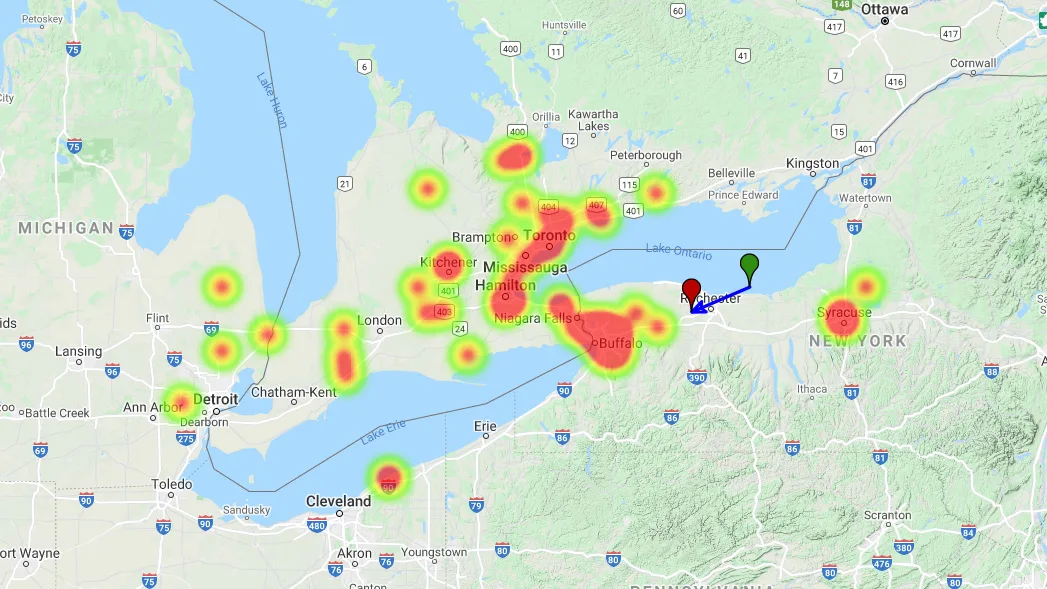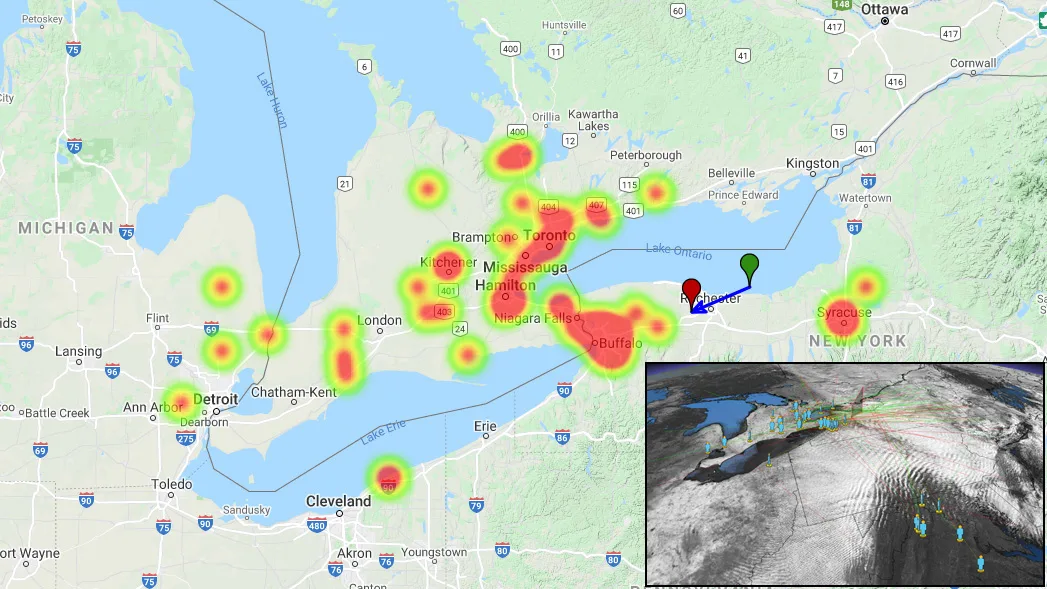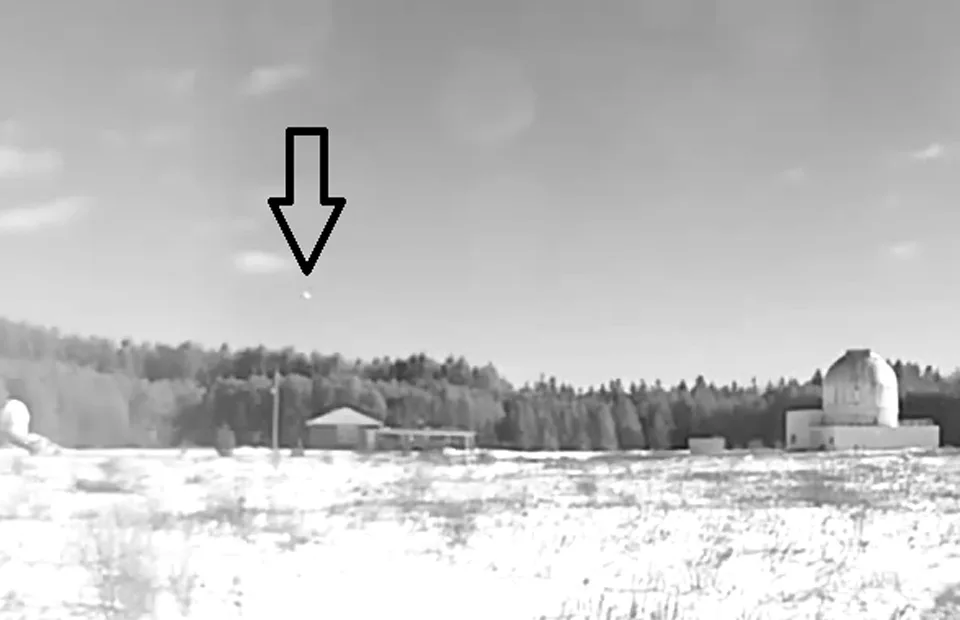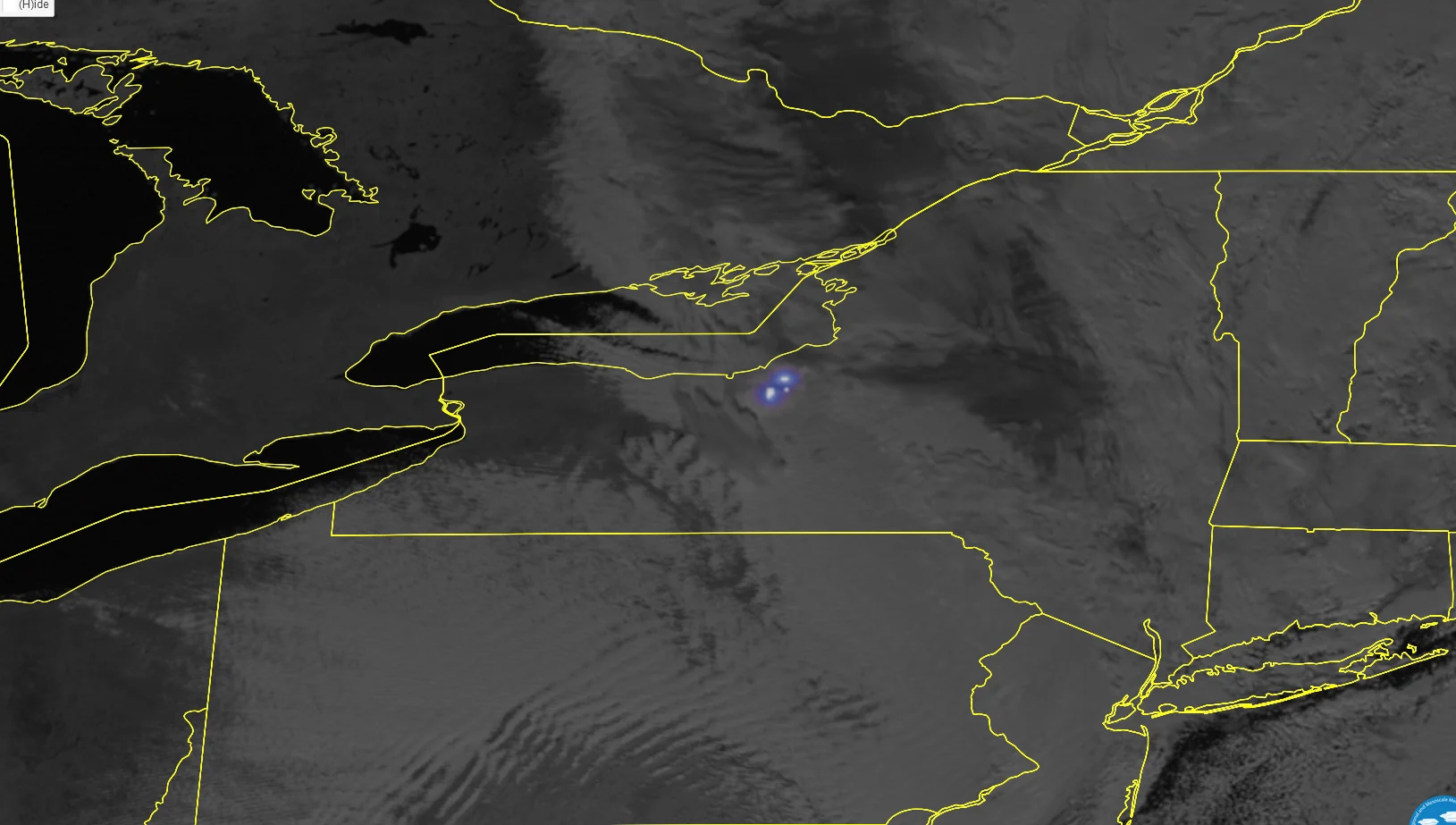
Bright fireball seen blazing through daytime sky from Toronto
A sonic boom apparently accompanied this basketball-sized visitor from space.
UPDATE: Based on communication with meteor scientist Peter Brown from Western University, as well as direct views of fireball itself, we must now conclude that the apparent bright flash shown in the CN Tower EarthCam views was NOT associated with the daytime fireball. In all likelihood, they are some kind of readjustment of the camera brightness or gain, and the timing was just a coincidence. An earlier version of this story featured a video containing the EarthCam footage, which has since been removed.
--
Did you see it? Just minutes after noon on Wednesday, a daytime fireball meteor streaked through the sky just south of Lake Ontario. Some witnesses even reported a loud sonic boom from the event.
At around 12:07 p.m. EST, on Wednesday, December 2, 2020, a small rock from space plunged into Earth's atmosphere along the southern shores of Lake Ontario, in the area of Rochester, NY. Over 180 witnesses have reported the event to the American Meteor Society website as of Thursday evening, from all across southern Ontario, eastern Michigan, Upstate New York, and from as far away as Washington, DC.

A 'heat map' showing the concentration of witness reports of the fireball from the American Meteor Society. Inset is a map of clouds over the area, with witness locations, shows how sky conditions greatly influenced who saw the event. Map credit: AMS
Although most people directly under the fireball missed out due to cloudy skies, many definitely heard the event. There were numerous reports of a sonic boom after the meteoroid exploded roughly 35 kilometres above the ground.
Twitter user 'Steve P', an Ontario Provincial Police Retired Inspector, happened to be in the right place at the right time to capture the fireball on a dashcam from St Thomas, Ontario. It's difficult to notice at first, so maximize the video for best results.
WHAT WAS THIS?
Fireballs like this are caused by chunks of rock and metal from space, known as meteoroids, plunging into Earth's atmosphere. As they speed through the thin air, tens of kilometres above our heads, the compress the air molecules in their path until the air around them glows. The size of the meteoroid and how fast it was going determines the brightness of the resulting fireball.
In an email to The Weather Network, Denis Vida, a postdoc in Western University's Meteor Physics group, said that this object appears to have been travelling at a speed of around 30 kilometres per second, which is reasonably fast. Also, it plunged into the atmosphere at a fairly steep angle, of at least 45 degrees.

A security camera image captured of the fireball from the Elginfield Observatory, north of London, Ont., on Wednesday. Credit: Western Meteor Physics Group
As for the size, figuring out how big a meteoroid was is a challenge. There are many factors that have to be taken into account. This being a daytime meteor presents its own challenges, as well. The brightness of the fireball tends to offer the best clue to the object's size. At night, this is relatively easy, but during the day, the brightness of the fireball gets washed out by the bright sunlight.
Based on what he has seen so far, however, Vida estimates that this meteoroid was somewhere in the range of 10s of centimetres wide, or roughly the size of a basketball.

This meteoroid encounter was captured by the Geostationary Lightning Mapper (GLM) instrument on the GOES-16 weather satellite, shown here in bright blue against the greyscale cloud map of the Great Lakes region. Credit: RAMMB/CIRA/Colorado State University
WHAT'S GOING ON HERE?
According to NASA, on any particular day of the year, an estimated 44 tonnes of material are swept up by Earth as the planet orbits the Sun. Much of this is in the form of tiny dust grains that we never even notice. Mixed in are larger bits of grit that show up as brief meteors, and occasionally, there are significant rocks that produce events like this one.
Even the majority of these tend to go unnoticed, though.
"As for the frequency of these objects, on the global scale, they occur between once a day to once every couple of weeks," Vida said, noting that this is dependent on size, with smaller ones being more frequent. "As 70% of the Earth is covered by oceans, and about 10% of the landmass is reasonably densely populated, people witness such events about once a month."
WILL THERE BE METEORITES?
Whenever there is a bright fireball like this, there's a chance that some pieces of the meteoroid will actually reach the ground. If we can find these meteorites, they can be of great value to the scientific community.
In this case, however, the speed of this particular meteoroid may have been its undoing.
According to Vida, if this space rock was, indeed, travelling at 30 kilometres per second, it would most likely have completely disintegrated during its passage through the atmosphere. If they determine that the speed was actually significantly slower, say less than 20 km/s, there is a chance some of the meteoroid may have survived to reach the ground.
Stay tuned for any updates on this amazing event!










